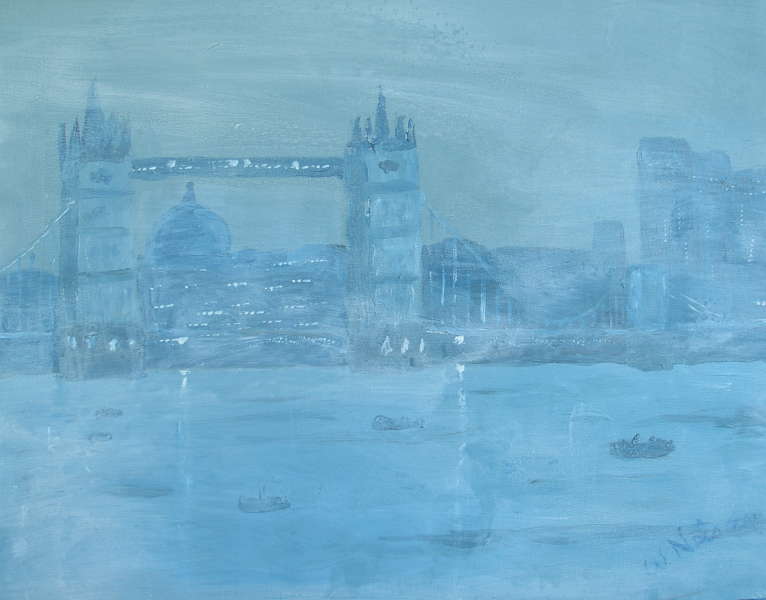Acrylic on Gallery Wrap Canvas, 16 x 20 x 1-1/2 (unframed), $70.00 USD
Tower Bridge in London, where many famous regents were imprisoned in history. This painting was done in the style of master painter, Whistler, using a limited palette of two colors.
InspirationWork of American artist James Abbott Whistler, 1834-1903. Grad of West Point. James Abbott McNeill Whistler (ˈdʒeɪmz ˈæbət məkˈniːl ˈwɪslɚ) (July 10, 1834 – July 17, 1903) was an American-born, British-based artist active during the American Gilded Age. He was averse to sentimentality and moral allusion in painting, and was a leading proponent of the credo "art for art's sake". His famous signature for his paintings was in the shape of a stylized butterfly possessing a long stinger for a tail. The symbol was apt, for it combined both aspects of his personality—his art was characterized by a subtle delicacy, while his public persona was combative. Finding a parallel between painting and music, Whistler entitled many of his paintings "arrangements", "harmonies", and "nocturnes", emphasizing the primacy of tonal harmony. His most famous painting is "Arrangement in Grey and Black No. 1" (1871), commonly known as Whistler's Mother, the revered and oft-parodied portrait of motherhood. Whistler influenced the art world and the broader culture of his time with his artistic theories and his friendships with leading artists and writers.
